TPHP in Nail Polish, Dangerous or Scare Tactic?
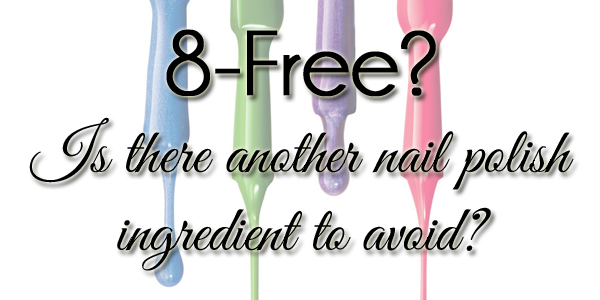
TPHP in Nail Polish
A number of click bait articles appeared in my “nail polish” google alert this morning. Things like, “Your Nail Polish Might Be Making You Gain Weight” and “Toxic Nail Polish Ingredient Found in Women’s Bodies.” OMG, you guys, we’re all going to die!! I mean, if we’re going to buy into those melodramatic headlines, we may as well have the proper freak-out response, no? Now I can blame weight gain on my affection for sparkle, and any illness on the need for pretty nails. All jokes aside, let’s break down what is happening.
The Environmental Working Group (EWG) is a non-profit research group dedicated to helping people live a healthier life by knowing more about their environment. They are claiming that an ingredient, TPHP, a suspected endocrine-disrupting chemical, is entering the bloodstream through nail polish, that a number of mainstream brands include the ingredient, and some don’t even list it. The problem is their research has been somewhat alarmist in the past. Like when they reported that 3-Free polishes actually contained Toluene or DBP, and everyone freaked out until it was revealed to be in brands very few people had heard of.
According to the EWG, brands containing TPHP include: Beauty Without Cruelty, butter LONDON, Essie, Maybelline, Milani, Nuance by Salma Hayek, OPI, Orly, Revlon, Sally Hansen, SpaRitual, theBalm, Wet n Wild. The EWG started a petition to ask the brands to remove the ingredient.
To get a different point of view, I turned to Doug Schoon, scientist and nail industry expert/consultant. He’s a go-to expert for the professional nail industry and I knew he would have a take on this situation. Turns out, he has a very lengthy take on it all based on reading the actual research and his 30+ years of experience. You can read ALL of his preliminary findings HERE. My boiled-down take is that the levels of TPHP in the system from nail polish exposure is no more significant than the level found in our bodies from everyday exposure to other environmental factors, and the EWG is blowing things out of proportion.
Finally, there is at least one reporter getting a different perspective instead of just taking the EWG at face value. WWD consulted with a medical expert and a scientist from the Personal Care Product Council, in addition to contacting the named brands (who referred to the PCPC). Their piece is well balanced and informative.
The point of all this… I don’t want you putting down the bottle when you see those alarming headlines, and I want you to educate yourself about both points of view. I personally think additional research is needed to prove that TPHP in nail polish is actually harmful, though I’m totally expecting brands not listed above to add another number to their “Free” list. What are we at now, 25-Free? We’ll soon be polishing our nails with colored water and calling it “50-Free.”
I’d love to hear your take on all of this. Has the crackdown on ingredients gone too far? Do you care about anything over 3-Free?
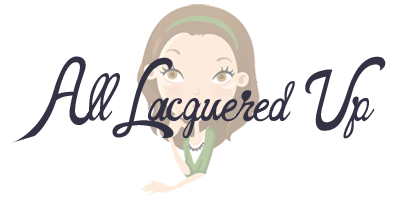
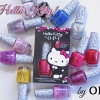
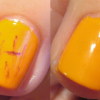
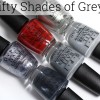
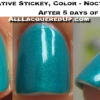
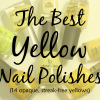



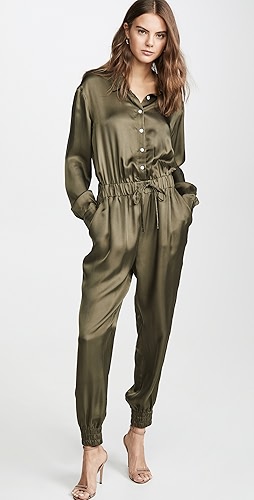





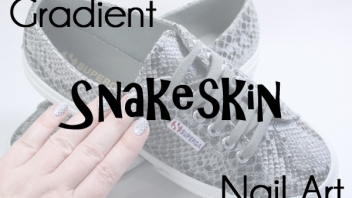
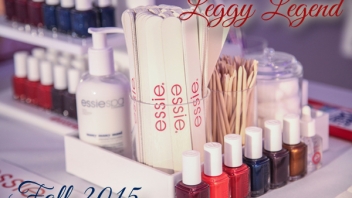
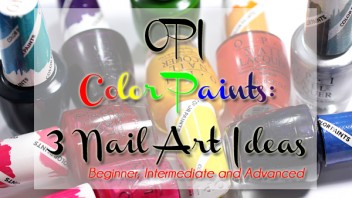
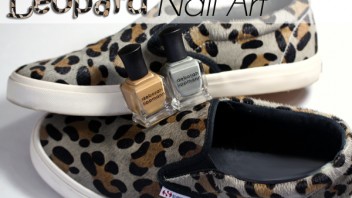
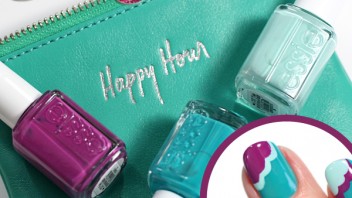
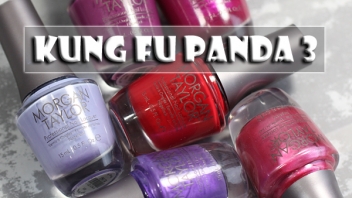
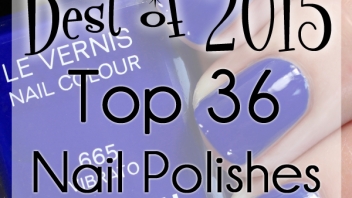
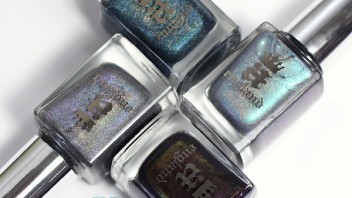
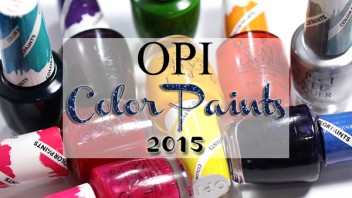
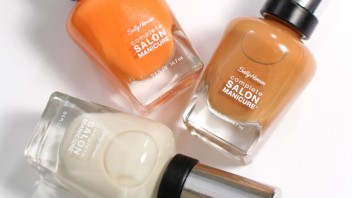
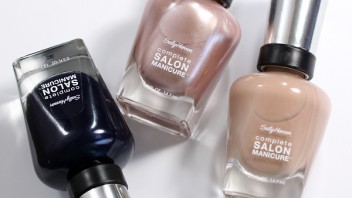
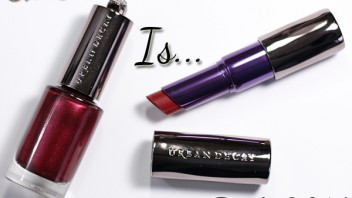
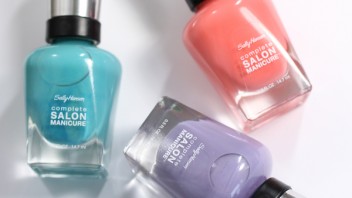
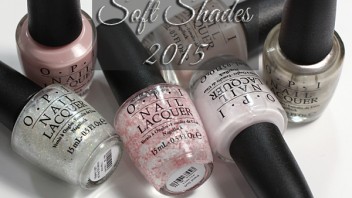
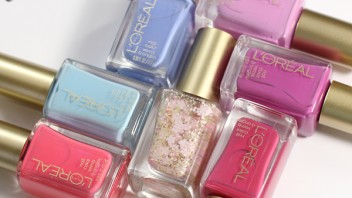
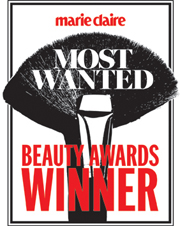

Hahaha. No! Please no colored water! I like my toxic nail polish as it is. Basically if it’s important for the performance of the polish and it’s not killing me, I want it in there.
If they ever made “50-free” water-based polish that had good coverage, applied smoothly, lasted, didn’t chip, and ideally was good for marbling and stamping too, I’d buy it in a heartbeat!
Sadly it looks like that’s still years away.
My question is: It is implied that EWG is out to scare people, but what does EWG stand to gain from this? It seems to met hey are spending money on studies and publicizing the results to spread awareness… What would their interest be in “demonizing” innocuous ingredients? Isn’t more knowledge and safer formulas in everyone’s interest?
I’m just as bummed as the next person about the news that TPHP is bad for us. I own hundreds of beloved polishes that contain it, and I’ll continue to use them. But in the future I will take the presence of the ingredient into consideration before buying, and try to go for colors that don’t have it.
Anyway, thanks for starting a discussion about this sensitive topic!
Andie (@Ungulae on Twitter)
Andie, I get what you are saying. I would love to believe that every group out there has totally altruistic intentions, but the fact is, there are a lot of activist/awareness groups in product, political, environmental, etc arenas with an agenda who put their spin on things for an unknown benefit. Do I know what the benefit is? No, but it’s hard to read Doug Schoon’s interpretation of the actual research and not wonder if the EWG is making a mountain out of a mole hill. Look at the brands who make non-5-Free brands sound dangerous. Is camphor dangerous? No. It can cause skin irritation, but not necessarily at the concentration used in nail polish. It’s just frustrating to see multiple outlets reporting the EWG’s findings as truth without presenting any other POV and demonizing the brands that use TPHP.
Andy,
One way the EWG would benefit is by gaining more funding. They get a lot of media coverage for these posts, so people assume it’s a great agency and keep sending them funding. The more media attention they can get, the more funding they can obtain.
What they gain from it – money!! Outrageous headlines = more people click on it (click bait) = attention.
Thank you Michelle,
It sure is tricky for us consumers to figure out who to trust when so many are defending industry for profit, or pushing activist agendas, as opposed to getting factual, useful info to us.
It’s great that you were able to get the feedback from Doug Schoon and I am heading over to read his comments now.
Thanks again and take care!
Andie
And also – the EWG doesn’t have the best track record regarding their scare campaigns. They are behind most of the campaigns agains parabens, even after further researched show that 1. they aren’t endocrine disruptors, 2. some of them might actually prevent breast cancer?
And of course, that part where they hollered a whole lot about ‘polyparaben’ and how dangerous and horrible it was, and how dishonest ~scientists~ were for not doing research on the danger of ‘polyparaben’. The problem being that there is no such thing as a polyparaben.
They still list polyparaben as something to be weary about (because it’s so dangerous and no one has done any research on it!) in the Skin Deep Database. Except polyparaben DOES NOT EXIST.
Thanks so much for sharing this. I’ve never heard of this topic nor have I ever heard of Doug Schoon. However, he is someone that I can truly appreciate. I read his comments on the topic as well as beginning to become acquainted with his Facebook. I appreciate that he deals in facts and commonsense and not mere conjecture.
Thank you! I basically agree with everything you wrote. I had even linked the thread where Doug discusses the issue in my personal FB, before well meaning but ill informed friends started posting about it.
Thanks for the article! I appreciate the hard work you do to inform all of us nail polish groupies! My take is that I don’t think EWG is any more of an alarmist group than many of the company’s that they investigate are sneaky lying dogs! (I’m going to speak in generalities, not specifically nail polish.) A lot of these agencies that raise awareness are non-profits….a lot of these companies that don’t have full disclosure of their ingredients, or where they come from, or how they get them, or how many sweatshops they run, or how much animal torture was involved to procure it, are FOR PROFIT. It doesn’t behoove any of these companies to give us full disclosure because if they did, I’m sure none of us would buy half the wares we do. So I’m glad there are agencies and investigative bureaus out there who want to dig deeper to get the public more information. At least it balances out the secrecy on the other side (the people who want our money). Once we’re informed, we can decide for ourselves what particular goods or brands we can get behind. I myself don’t like the figurative “wool” pulled over my eyes…(which btw, is another product you would be shocked by how they acquire. Sorry, this rabbit hole goes deep.)
My take is that I don’t think EWG is any more of an alarmist group than many of the company’s that they investigate are sneaky lying dogs! (I’m going to speak in generalities, not specifically nail polish.) A lot of these agencies that raise awareness are non-profits….a lot of these companies that don’t have full disclosure of their ingredients, or where they come from, or how they get them, or how many sweatshops they run, or how much animal torture was involved to procure it, are FOR PROFIT. It doesn’t behoove any of these companies to give us full disclosure because if they did, I’m sure none of us would buy half the wares we do. So I’m glad there are agencies and investigative bureaus out there who want to dig deeper to get the public more information. At least it balances out the secrecy on the other side (the people who want our money). Once we’re informed, we can decide for ourselves what particular goods or brands we can get behind. I myself don’t like the figurative “wool” pulled over my eyes…(which btw, is another product you would be shocked by how they acquire. Sorry, this rabbit hole goes deep.)
I learned years ago that the EWG is nothing more than a scaremongering group, and don’t seem to consult any scientists before issuing their dire, “the world is ending” proclamations. I don’t know what their game is, but I refuse to participate.
Exactly. I actually used to consult them and their nonsense database for “safe” products to use, and spent way too much money and time and stress trying to track down organic versions of the produce on their “Dirty Dozen” list. Then I read better information- or rather, learned how to accurately read and evaluate evidence. And that’s made all the difference.
Crikey. Nail polish. What’s in the water? What’s in the air? The soil? Do you take the pill? Do you wear polyester?
Forget it. We have to die sometime. There’s nothing natural about painting your nails, your face or your WALLS. You could strangle yourself if your pure hemp necklace gets caught in a branch of your tree-house.
What should be painting our nails with? Ground up beetle-shells in water? Yes, that’s really going to work. Pah.
I was interested enough to read the results of the study however not alarmed enough to discontinue the use of the few polishes I have that contain the TPHP. Although I agree they can be alarmists, I would prefer more knowledge or information (to sift through) than no knowledge. So it comes down to people like you who are adding “more informed” opinions to the discussions so that the rest can make choices. Thanks!
Ignorance is bliss? Yes-yes if you like to roll the dice on your health and life. We all know the motivational behind mega product retailers $$$$. But watch dog groups? Hmmmmm? Just a bunch of party spoilers. Fact remains that TPHP is in there. Do your own research-if you trust yourself. One other thought- ponder a moment …how many people do you know suffering from or lost the battle to cancer? Personally I don’t have enough fingers.
For myself, I really don’t care past 3-free. However, my 3-year-old is very interested in wearing nail polish, and I do care for her. When she has the patience to let me paint her nails, let it dry, and not want to take it off within the same day, then I will let her wear “big girl” nail polish, and it had better be safe for her. Even if TPHP isn’t worth worrying over for adults, that may not be the case for sensitive little fingers and bodies, and we deserve to know the risks. So I will read the click bait, but I will also read Doug’s comments, and whatever else I can to make an informed decision. I do wish it was easier to make an informed decision though, without all the extreme scare tactics.
I absolutely agree. I wish it was easier to find real answers without hunting all over the internet. And for children, I totally understand being concerned about every product they use. You should look into Scotch Naturals, they make water-based, non-toxic, peel-off polish for kids. I believe the kids line is called Hop Scotch.
No one in the science-base researched world takes anything the EWG says seriously. It’s a LOBBYIST GROUP = MONEY. That’s your motivation and reasoning.
I don’t find the EWG to use scare tactics. However, I believe the media uses over the top headlines to grab the attention of readers. Unfortunately, many readers don’t actually take the time to read the full study.
“To investigate how TPHP from nail polish was absorbed into the body, study participants collected urine samples before and after they applied a polish that was about 1 percent TPHP by weight. When the participants wore gloves and applied polish to synthetic nails, their urinary levels of the metabolite DPHP did not change appreciably. However, when they applied the polish directly to their own nails, the levels of DPHP in their urine increased sharply.
Normally, most molecules do not permeate nails (Gupchup 1999). The researchers theorized that other polish ingredients such as solvents rendered nails more absorbent. They also suspected that the network of capillaries in the cuticle that surrounds the nail might play a role in carrying the chemical into the body.
Two to six hours after they painted their nails, 24 of the 26 volunteers in the study had slightly elevated levels of DPHP in their urine. Ten to 14 hours after polishing their nails, the DPHP levels in all 26 participants had risen by an average of nearly sevenfold, suggesting that more of the TPHP had entered their bodies and been metabolized into DPHP.
Four volunteers collected urine over 48 hours. For three of the four, their concentrations of DPHP peaked between 10 and 20 hours after painting their nails.
These results indicate that nail polish may be an important contributor to short-term TPHP exposure. For frequent users of nail polish, exposure to TPHP may be a long-term hazard.”
The full article can be found here: http://www.ewg.org/research/nailed/nail-polish-chemical-doubles-furniture-fire-retardant
It is also interesting to note, according to the study, that clear polish contains more TPHP than colored polish. Women absorb more TPHP than men. Children absorb more than adults.
The EWG simply wants to raise awareness of potential risks. They aren’t on a witch hunt. They want to allow people to make their own informed decisions. I applaud them for their efforts.
Jenifer, did you read any of the information at the other sources I linked to? WWD or Doug Schoon? I suggest reading more than just EWG’s version before making a definitive decision.
I agree with Jenifer and Dina.
I personally would rather be made aware of the potential risks than not knowing. I have endocrinien cancer and not one doctor has been able to tell me how I got it. I hope that the EWG work will force Nail polish makers to come up with a safe nail polish, free of TPHP.
I wouldnt be surprised if nail polish (however many free) contained harmful chemicals. That and np remover makes me cough a lot and gives someone else I know a headache. I do like painting my nails though and I know a lot of people following this blog will be too in to nail polish to abandon their hobby.
Thanks for bringing this to my/our attention. I hadnt heard of this…and also I live in the UK so there are other brands. I think research would have to be published in a paper (if this wasnt) or a number of decent studies for np makers to adjust the ingredients and users to change brands or buy more etc.
Above 3-free doesn’t really concern me. I think if polish companies are always trying and reformulating to be a little better for us and the environment that’s good enough for me. It sounds like a bit of a scare-tactic that I, personally, would definitely want to do more research (from multiple sources) before getting all hyped up over it. I mean, you’re literally putting paint on your nails, so I don’t really know what people are expecting, haha! It’s going to be harmful no matter what, I’m pretty sure as long as you don’t drink it, you’ll be fine.
Doug Schoon is the co-chair of the Nail Manufacturer’s Council and Creative Nail Design’s chief scientist. You don’t think a man with these credentials is going to put his own spin on this issue? The NMC represent over 90% of the nail products in the country. He’s the guy making sure nobody believes these chemicals are a problem. “Schoon is a strong advocate for the nail
industry and often serves as an expert witness in legal cases.” This is the last “scientist” I would trust on advice about chemicals in nail products. The nail industry is his bread and butter.
That didn’t take too much digging. Thank you Kristi.
I agree its important to be informed on all sides. So, how is it that a nail industry consultant… Whom i presume gets paid by nail polish companies, is seen as the objective voice in this??
Wouldn’t it behoove him to take a less alarmist view , otherwise many companies are not going to be very happy with him.
Just wondering.
That’s where I am on this. I don’t automatically accept everything the EWG says, but it’s a mistake to listen too much to the spin put on things by people working for the industry. And that’s what this post more or less does–accepts what scientists working for companies making these products have to say at face value.
I’m an attorney who has to deal with quite a bit of expert testimony as part of my job. I have never worked on any case involving nail polish or personal care products, and I don’t have any strong beliefs on this subject one way or the other. But one thing I have learned is that scientists working for an industry group can be really, really good at making their products sound much safer than they really are.
That is *not* to say that the EWG is right. My point is only that you’d be much better off getting input from a scientist that is in no way at all connected even a little bit to the industry if what you want is a realistic, unbiased take.
Also, I read the WWD article. The medical expert cited there is a nurse practitioner who basically said we need more research, not that TPHP is ok. And the article didn’t do any kind of review of the EWG’s & Duke University’s study, it just did a “here’s one side, and here’s what the other side says” report. There’s nothing wrong with that. It’s just not enough to draw an informed decision from.
We shouldn’t conclude that the EWG/Duke University study is definitive and we therefore need to avoid nail polish. We also shouldn’t just take the word of people working in the industry who have an interest in keeping people buying polish. At this point, all we can do is be aware and make a decision about what’s best for ourselves. I for one will keep painting my nails, but I’ll also be keeping an eye out for follow-up studies from people unaffiliated with either environmental groups or the personal care industry.
Sometimes they make big title just to get more clicking on the post
Have any of you out there had breast cancer, particularly estrogen positive breast cancer – one of the most ‘common’ types? Estrogen positive breast cancer is fed by the estrogens in our bodies and the environment. There are many, many chemicals that we are exposed to that act like estrogens in our bodies and they are feeding our cancer. TPHP is a suspected endocrine-disrupting chemical. Endocrine disruptors are a category of chemicals that alter the normal function of hormones. Normally, our endocrine system releases hormones that signal different tissues telling them what to do. When chemicals from the outside get into our bodies, they have the ability to mimic our natural hormones; blocking or binding hormone receptors. This is particularly detrimental to hormone sensitive organs like the uterus and the breast, the immune and neurological systems, as well as human development.
Most importantly, DOSE does not always equal POISON. Sometimes smaller dose exposure can be more harmful to us than larger doses. Large dose exposure can overwhelm the endocrine receptors and our bodies can recognize this and protect us from the large doses. But the body can be tricked by small doses and/or repetitive small doses, and the additive effect of the smaller doses is what can be most harmful. A little bit here- a little bit there- is worse than a lot of it all at once.
I was diagnosed w DCIS estrogen positive stage 0 breast cancer 3 yrs ago . i was very lucky it wasnt anything more, but it was very scary to go through. I changed my diet to plant based. I no longer eat meat and limit my dairy. I’ve increased my greens and veggies. I’ve removed beauty care items that contain questionable ingredients. Yet nail polish is the one thing I have not eliminated. I do stick to only B3 and B5 free, but as we know, there are still questionable chemicals in them unfortunately. I have a hard deciding what to do. Nail Polish is my one beauty obsession and polishing my nails provides me w relaxation and zen time. It really stinks to even have to worry about these things.
great post Michelle! Personally I can’t stand the EWG. In my opinion they do nothing more than fear mongering and since they don’t publish any of their methodology its impossible to replicate or verify their results. Likewise many of the things the EWG ‘claim’ are ‘toxic’ are only harmful if taken orally NOT topically. And unfortunately many people don’t know/understand how big of a difference route of administration makes and the physiological implications. If i’m being honest I don’t care about 3 free or 5 free either. I’ve taken anatomy and dissection courses so I’ve already been exposed to MUCH more formaldehyde (and in much higher doses) than I’d ever experience from more than a lifetime of polish use.
I would rather be healthy fit and have natural beauty that paint myself with toxic poisons.
I have no chicken in this fight (and am a polish wearer), but this is irresponsible reporting. The study was not just from the “alarmist” EWG, but from Duke University–and I’d doubt it be randomly biased against the nail industry. If you wanted to find out the truth–and I do too–why would you go to a paid consultant and not find a scientist unconnected to the industry at all–or how about an endocrinologist, to put the study in context? I’m really tired of writers like yourself finding supporting evidence to confirm what you already believe. Why not take a responsible and objective look at the issue–even if it means, ultimately and in the worse case scenario, that you may have devoted your site to promoting something that is harmful? Best case scenario is that the science isn’t repeatable and valuable–and that may be. But in the meantime, don’t sit there repeating empty assurances (to yourself) with your fingers in your ears.
Have you ever read my site before today? Did you come here simply to insult me? Last time I checked, this is a personal nail blog, not The New York Times. I state my opinion here. That being said, I presented multiple perspectives, including one from WWD that includes thoughts from people unconnected to the nail industry. I also presented my opinion, which is my right. Finally, I told people to read all the links I shared, incluind the EWG, and to make up their own mind. So, don’t come here and attack me for how I approached this topic.
Well said Michelle.
Here’s the thing, ladies and gents: nail polish is made up of chemicals. If you are don’t like that, then don’t paint your nails. We live in a world full of chemicals. Pretty much every chemical is harmful at high enough levels, even water. Using scare tactics to intimate that a certain chemical in tiny amounts is going to cause weight and/or cancer is a scare tactic, and extremely dishonest. Personally, I find this to be mostly alarmist, click-baity crap, along with about 95% of the news we see today. Everything is bad for us! Live in a bubble! Don’t drink the Kool-Aid! I do advocate for knowing more about the ingredients in nail polish (and makeup) so we can know what we put on our bodies and make choices to wear them or not, but doing it like this just panics people and causes unnecessary alarm. Perhaps TPHP is harmful in higher doses, but we don’t actually know that, despite what the EWG says. More research is needed, so I wouldn’t toss out all your nail polish just because the EWG says to.
Do you by chance have a link to the original Duke report? I am writing a communications paper on the subject and would love to read it myself but cannot seem to find it.
This is the link I found. You have to purchase the report if you can’t get access through your institution.
http://www.sciencedirect.com/science/article/pii/S0160412015300714
As a health researcher and writer, who also uses nail polish, I think it is important to listen to scientific information even when it is telling me something I am not happy to learn– rather than dismissing the bearer of the news as “fear-mongering.” Since it has been well established that many products containing chemicals are neither well studied nor fully regulated, I am always grateful for scientists who manage to get funding to do new research and to non-profit information organizations who put the news out there. Whatever they are earning, it is far less than what the industries and their paid consultants make. Which brings me to Doug Schoon. When someone calls himself a “scientist,” we should not take that to mean that he knows the scientific facts about everything in the world, because no one does. Scientists have specialties. Doug Schoon, as can be seen from his resume, http://www.schoonscientific.com/consulting-services-regulatory-compliance.html is a product formulator, regulatory compliance expert, and nail industry consultant and PR expert. He is not a health expert, physician, or biological researcher. Therefore, he is not qualified to comment about whether or not the increases noted in the study have significance for health. But he ridicules the scientific findings when he says that this “could be a trivial increase that means nothing.” We would all like to believe it is trivial, but a little of this and a little of that, and many people develop symptoms and diseases that we cannot trace to a single ingredient, exposure, or use– though the evidence is mounting that they play a part. The question is: where is the tipping point when these “little” “trivial” exposures lead to poor health? While we cannot point to one exposure and claim it alone caused your friend’s cancer or your sister’s weight gain, neither do we know exactly when daily exposure over say, 5 years, combined with other factors might all work together to produce a health problem. So there is a difference between saying we don’t know exactly how many exposures will cause a problem— and concluding that this substance is harm-free. Because the Duke University study clearly says that it is not. “Our results indicate that nail polish may be a significant source of short-term TPHP exposure and a source of chronic exposure for frequent users or those occupationally exposed.” So the takeaway is to reduce our factors. Choosing to wear or not to wear nail polish may or may not be your or my choice. But we need the information to choose either way. And when we ignore the science and give credence to a spokesperson from industry without health expertise who belittles the data — then we allow ourselves to be manipulated. Yes, we may wish it wasn’t so. I know I do. But that is different than willingly allowing myself to be misled.
Yes, we need to be informed. However, i am sick of paying good money for products that say they are totally non-toxic (ie butter london) and then find they have just replaced one toxic ingredient with another… I believe the EWG are trustworthy, they have NOTHING to gain by posting this information. Once you start checking ingredients, especially in what is called ‘food’ then you realise that we are being poisoned.
I´m from Brazil and I love your blog. I love nail polish and I´ve been allergic to formaldehyde and toluene for over 20 years. So 3 free polishes are very important to me. These polishes made possible for people like me to keep using it. Just remember that some of these ingredients can cause allergies to some people.
I work in the life sciences, and I’m concerned. In the case of endocrine disruptors, sometimes even trace amounts, much lower than anyone ever expected, can influence health. In some cases, a chemical may only be dangerous during critical periods of development. The truth is we don’t know “safe” levels for most chemicals. We also have little knowledge how the chemical soup in our bodies interacts; we absolutely know that some chemicals act synergistically while other have inhibitatory effects on another chemical (so things could be worse or better depending on interactions).
In my opinion, the problem is that we wait until there is proof something is bad rather than try to pick safe products from the get go. With human studies, definitive proof is really, really hard to have. In many cases, the best that can be done is look at experiments at the cell level, animal studies, and human epidemiological studies, but even with all that, a chemical company will protest it hasn’t been proven. Personally, I am concerned when I see animal studies combined with a mechanistic action (for example, knowing that a certain chemical may interact with something in th cell that is understood), and I think we ought to be much more cautious.